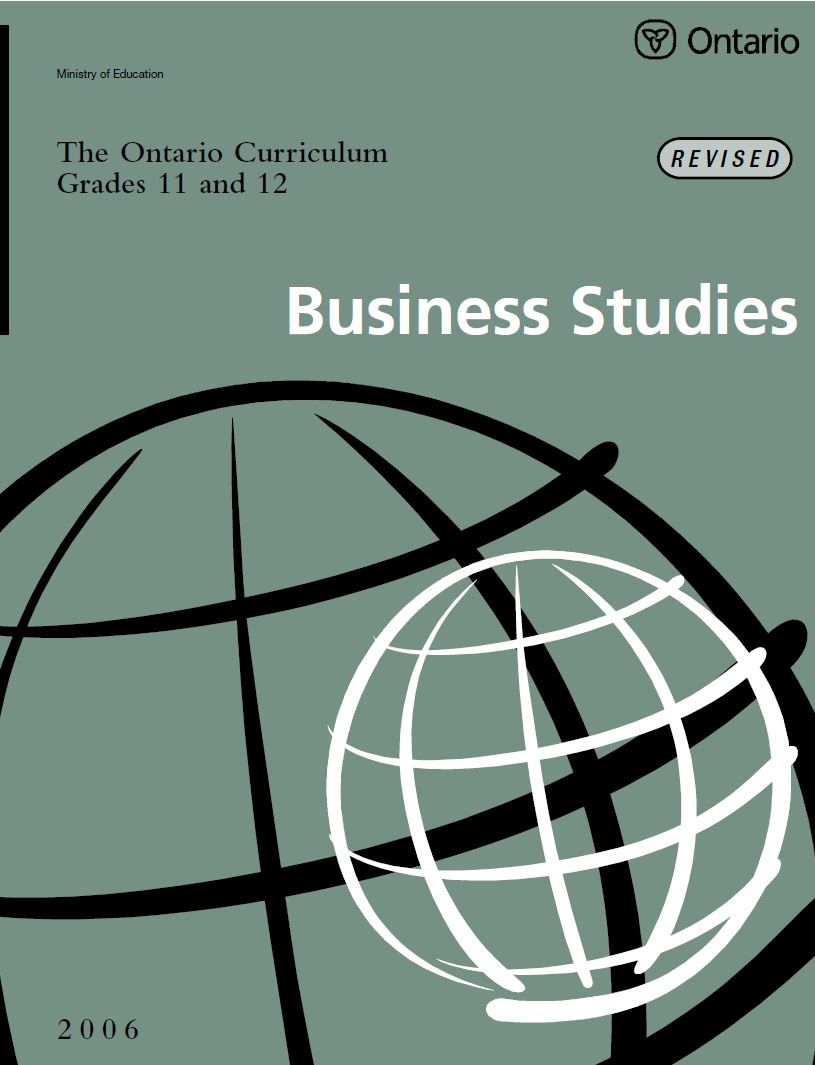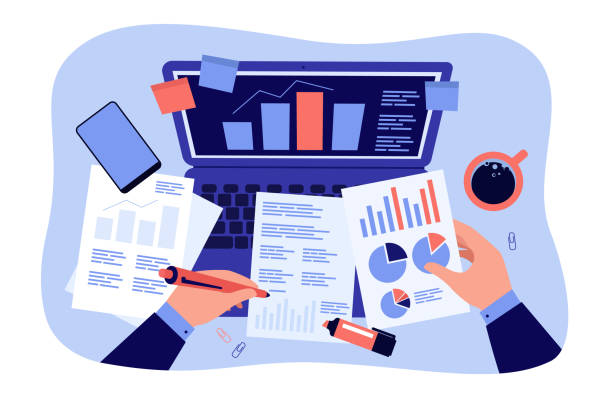Grade 12 Accounting
Overview of Grade 12 Accounting
Accounting is often referred to as the language of business, as it plays a crucial role in nearly every organization and individual’s financial activities. From small neighborhood stores to multinational corporations, businesses rely on accounting to organize, analyze, and communicate their financial information. This financial clarity empowers individuals and organizations to make informed business decisions. By integrating information technology and accounting software into the curriculum, students can be better equipped to thrive in today’s dynamic business landscape. Those who master accounting fundamentals and develop critical thinking skills will gain the confidence to apply accounting principles effectively across a wide range of careers.
Strands
Financial Accounting Principles, Grade 12, University/College Preparation (BAT4M)
This course introduces students to advanced accounting principles that will prepare them for postsecondary studies in business. Students will learn about financial statements for various forms of business ownership and how those statements are interpreted in making business decisions. This course expands students’ knowledge of sources of financing, further develops accounting methods for assets, and introduces accounting for partnerships and corporations.
Prerequisite: Financial Accounting Fundamentals, Grade 11, University/College Preparation
Accounting for a Small Business, Grade 12,Workplace Preparation (BAN4E)
This course further develops students’ understanding of the fundamentals of accounting by having them examine each component of the accounting cycle, with an emphasis on a merchandising business. Students will use computer applications software to learn how accounting is practised in the workplace. Students will acquire an understanding of payroll systems, inventory, specialized journals, subsidiary ledgers, income tax reporting, and budgeting.
Prerequisite: Accounting Essentials, Grade 11, Workplace Preparation
Ontario Curriculum Breakdown - Grade 12 Accounting (BAT4M)

Specific Expectations
Accounting Principles and Practices
By the end of the Grade 12 Accounting course, students will:
- apply Generally Accepted Accounting Principles (GAAP) (e.g., matching principle, conservatism principle, realization principle) in the accounting cycle;
- demonstrate the relationship between GAAP and accounting practices (e.g., matching principle and adjusting entries, cost principle and asset valuation);
- describe the roles of various agencies (e.g., Canadian Institute of Chartered Accountants, Certified General Accountants Association of Ontario, Society of Management Accountants of Ontario, Ontario Securities Commission, Canada Revenue Agency) and their effects on accounting practices.
Accounting Cycle in a Computerized Environment
By the end of the Grade 12 Accounting course, students will:
- record transactions, using a computerized accounting system, for a service business and a merchandising business;
- prepare a trial balance and detailed financial statements, using applications software;
- record adjusting, closing, and reversing entries, using a computerized accounting system.
Ethics and Issues in Accounting
By the end of the Grade 12 Accounting course, students will:
- describe the impact of ethical issues on accounting practices;
- analyse the effects of current issues on financial accounting (e.g., transactions off the balance sheet, fraudulent practices in financial statement reporting, manipulation of GAAP, move towards global accounting practices);
- evaluate the impact of the evolution of technology on the field of accounting.
Specific Expectations
Short-Term Assets
By the end of the Grade 12 Accounting course, students will:
- record transactions for different terms of sales (e.g., sales on account, credit card sales, debit card sales);
- record transactions related to accounts receivable, including doubtful accounts, write-offs, and recoveries;
- explain the accounting procedures for notes receivable.
Inventory Procedures
By the end of the Grade 12 Accounting course, students will:
- compare the characteristics of the periodic and perpetual inventory systems;
- describe and apply different methods of inventory valuation, including average cost; first-in, first-out; last-in, first-out; and specific identification;
- explain the effects of each method of inventory valuation on financial statements;
- explain the effects of an error in valuing inventory on financial statements;
- analyse the role of technology in the management and control of inventory;
- explain the role of internal controls (e.g., paper trails, numbered documents, authorization).
Capital Assets
By the end of the Grade 12 Accounting course, students will:
- distinguish between capital expenditures and revenue expenditures;
- identify the elements used in determining the cost of plant and equipment, natural resources, and intangibles;
- record transactions related to amortization and depletion of tangible assets (e.g., straight-line, declining balance, units of output, revisions, disposals);
- record transactions related to intangible assets (e.g., goodwill, patents, trademarks, copyright);
- analyse methods of amortization (e.g., straight-line, declining balance, units of output) and their effects on financial statements.
Specific Expectations
Partnerships
By the end of the Grade 12 Accounting course, students will:
- explain the differences between limited and general partnerships;
- record transactions relating to partnerships, including formation, admission of a new partner, retirement of a current partner, and dissolution;
- record the distribution of income among partners;
- prepare the partnership equity section of the balance sheet.
Corporations
By the end of the Grade 12 Accounting course, students will:
- describe types of corporations (e.g., public, private, not-for-profit) and classes of shares (e.g., common, preferred, voting);
- record transactions related to common and preferred stocks (e.g., issue, buy back, subscriptions);– record transactions related to the declaration and distribution of dividends;
- compare the impact of various forms of dividend distribution (e.g., cash dividends, stock dividends, stock splits) on shareholders’ equity;
- prepare the financial statements for a corporation, including an income statement, a statement of retained earnings, and the shareholders’ equity section of the balance sheet.
Specific Expectations
Methods of Financing
By the end of the Grade 12 Accounting course, students will:
- explain the characteristics of debt financing (e.g., bonds, notes payable, loans) and equity financing (e.g., sale of common or preferred shares) as methods of financing;
- compare the advantages and disadvantages of debt financing and equity financing;
- describe alternative sources of funding available to businesses (e.g., venture capital, government loans and grants).
Annual Reports
By the end of the Grade 12 Accounting course, students will:
- describe the purpose of each section common to a corporation’s annual report;
- contrast the annual reports of comparable publicly traded corporations (e.g., of similar size, in the same industry, Canadian versus international);
- assess the current and projected financial strength of a corporation based on an analysis of its annual report.
Financial Analysis for Decision Making
By the end of the Grade 12 Accounting course, students will:
- evaluate the role and impact of accounting information in decision making;
- analyse the financial status of a company (e.g., liquidity, solvency, profitability) by using horizontal and vertical analysis;
- analyse the financial status of a company, using financial ratios (e.g., turnover ratios, book value, earnings per share, times interest earned, return on assets);
- prepare and analyse cash flow statements (i.e., statements of changes in financial position);
- use information technology to conduct financial analysis.
York Region Tutoring Provides
If a student is approaching a forthcoming test, we can provide them with a previous test to be completed at home before their upcoming session. Subsequently, during their next class, just before the exam, they can review the test with their tutor. These tests are exclusively sourced from high schools in York Region and other areas in Ontario, serving as the definitive benchmark for students to assess their readiness.
York Region Tutors and are equipped with drawing tablets making collaboration simple, efficient and effective. We also offer drawing tablets at a discount for purchase to students who really take to the functionality of the product.
At the parents’ request, following each tutoring session, our tutors can assign homework tailored to address weaknesses and reinforce strengths in students. Additionally, we incorporate homework questions directly extracted from previous tests and quizzes administered by YRDSB school teachers, allowing students to familiarize themselves with potential test questions.

